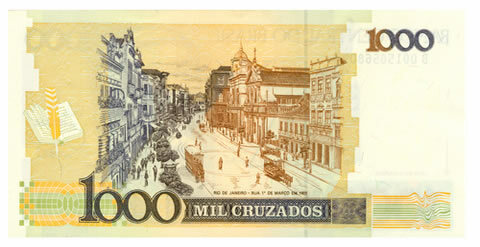In 1820, the Portuguese organized the so-called Liberal Revolution in Porto. In this advent, Portuguese political leaders formed an assembly that demanded the return of D. João VI for the elaboration of a new constitutional charter. Since 1808, this monarch was in Brazilian lands and had transformed the city of Rio de Janeiro into the new capital of the empire.
Fearing to lose the condition of king of Portugal, D. João VI returned to Europe to participate in discussions aimed at changing the political situation in Portugal. The Portuguese Courts, the name given to the assembly that had taken power, intended to modernize the political regime in their country. However, from an economic point of view, they had an express interest in recolonizing Brazil and putting an end to the privileges guaranteed by the Joanina administration.
Upon learning of the political intentions of the Cortes, the Brazilian elites organized themselves into a party that intended to facilitate the organization of our independence. Among the various project options, the members of the Brazilian Party preferred to organize a political transition without major popular uprisings in which Brazil was controlled by a regime monarchist. To do so, they approached D. Pedro I, who occupied the function of prince regent, and would be sworn in as future emperor.
The explanation for the conservative tone of this independence project was manifested in the very social origins of its representatives. For the most part, the supporters of our definitive autonomy were rural aristocrats, civil servants and merchants who figured in the local economic elite. Therefore, we see that the possibility of organizing a popular movement or the end of the slavery regime was indiscriminately discarded by this political group.
Among the main members, the performance of Gonçalves Ledo, Januário da Cunha Barbosa and José Bonifácio de Andrada e Silva stands out. The latter, a practitioner of Freemasonry, managed to gather several members of the elite in the meetings of his Masonic lodge, including the Prince Regent Dom Pedro I himself. Another important action of this party was the organization of a document, with more than eight thousand signatures, which asked for the permanence of D. Pedro I in Brazil.
Do not stop now... There's more after the advertising ;)
The realization of this and other political actions, which suggested the permanence of Dom Pedro I in power, were crucial for independence to reach this conservative model. In the first months of 1822, the regent confirmed his support for independence by ensuring his permanence in Brazil on the “Day of Fico”. Soon after, the “Fulfill yourself” was issued, a decree that established that no Portuguese law would be valid in Brazil without the regent's prior authorization.
Fearing the possible political pretensions of D. Pedro I, the Cortes of Portugal sent a document in which they threatened to send troops that would bring the prince regent by force to the Old World. Through reprisal, members of the Brazilian party advised D. Pedro I to proclaim independence immediately, before conflicts with Portuguese troops turned our independence into a popular movement.
In this way, we realize that the agrarian elite and the other members of the ruling classes in Brazil skillfully conducted our independence process. Even reaching the condition of a sovereign nation, a good part of the population found itself tied to the same practices and institutions that guaranteed the privileges of the most powerful. As such, our “September 7th” has turned into a break surrounded by a series of problematic continuities.
By Rainer Sousa
Graduated in History
Would you like to reference this text in a school or academic work? Look:
SOUSA, Rainer Gonçalves. "The organization of Brazilian independence"; Brazil School. Available in: https://brasilescola.uol.com.br/historiab/a-organizacao-independencia-brasileira.htm. Accessed on June 27, 2021.

